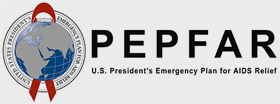
Increasing condom availability ensures a comprehensive prevention approach and helps decrease the transmission of HIV/AIDS. To address gaps in condom availability, the U.S. Agency for International Development (USAID), through its global health programs, assists countries by supporting condom programming strategies that address key supply and demand issues. USAID applies a “total market approach” to condom programming that includes engaging the public sector to provide free condoms, social marketing that subsidizes condoms, and the private sector that sells market-priced condoms. The approach also includes the key element of sustainability to reduce reliance on donors and increase country ownership.
USAID’s global supply chain projects have been the primary procurement agents for male and female condoms and water-based lubricants. Between fiscal year (FY) 2016 and 2022, with funding mainly from the President’s Emergency Plan for AIDS Relief (PEPFAR) Condom Fund, the USAID Global Health Supply Chain Program-Procurement and Supply Management (GHSC-PSM) project procured a total value of $158.1 million condoms and lubricants, consisting of male condoms ($118.6 million), female condoms ($32.8 million), and lubricants ($6.7 million) for 61 countries in Africa, Asia, Europe, Middle East, and Latin America and the Caribbean (LAC) regions. USAID’s support of the condom program targets regions with a high supply gap. These commodities are provided at no cost, enabling governments to make them available to poor and vulnerable people for free or at highly subsidized prices.


